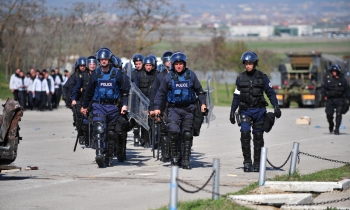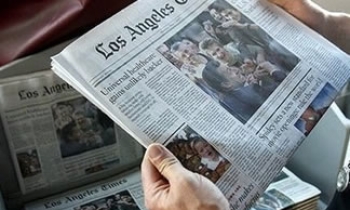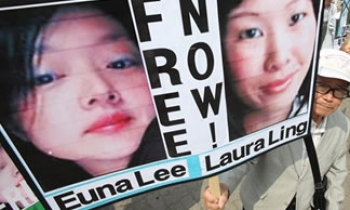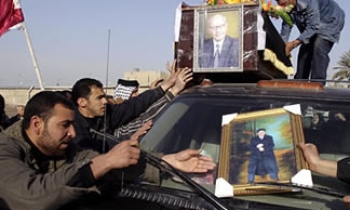The story of Hattiesburg, Miss., is being told worldwide through journalism of a new kind.
After Hurricane Katrina slammed into the Louisiana/Mississippi coast Monday it churned through Hattiesburg about 75 miles to the north. Destruction was widespread and conditions deteriorated in the days after the storm.
Worldwide media attention focused on the disintegration of New Orleans because of the magnitude of the catastrophe. At the same time, people across the nation were desperate for information on their loved ones in Hattiesburg.
That story needed to be told, too. The staff of the Hattiesburg American, with help from a network of Gannett colleagues across the nation, used its Web site to tell the story.
Because of my experience with Hurricane Charley, I was asked to go to Hattiesburg to lend a hand. (Both newspapers are owned by Gannett.) I arrived in the newsroom Sunday night as the first wind and rain moved into the area. The days ahead posed the biggest hurdles that journalists can face.
As the eye of the hurricane hit Hattiesburg, the reporters and editors fed constant updates to the Web site, hattiesburgamerican.com. Minute-by-minute accounts were posted online. The building had been switched to generator power before the storm so we could continue to publish. As the entire region lost power, news still was being fed online.
Then, the generator fell victim and the newsroom went dark.
Journalism instincts overtook the temptation to curl up in a ball as the building shook and rain poured through the peeling roof. Instead, the team kept at it – gathering and disseminating news at a critical time.
With no power, stories couldn't be posted via the Internet, which is our usual way of producing a Web site. Instead, reporters began dictating stories over cell phones to editors at Gannett's offices in Virginia.
Then cell-phone connections started to fail. We arranged for reporters elsewhere to report from afar. Betty Parker, political writer at The News-Press, conducted interviews with Mississippi officials by phone. Working here in Fort Myers, she sent information to Virginia. Mackenzie Warren, our multimedia editor until a recent promotion, used his laptop to post stories from the Atlanta airport, where he was stranded.
At The Pensacola News Journal, also a Gannett newspaper, the staff created a means for hattiesburgamerican.com to have community forums, in which thousands of people continue to swap information. The Hattiesburg Web site does not have the software needed to provide this service, so Pensacola is handling it in the background.
After the storm, it was important to provide aerial photographs to show damage. A Hattiesburg photographer went to the airport for a flight that had been arranged in advance. The hangar had been destroyed. Editors in Jackson, Miss., sent a photographer from there and then posted the photographs on Hattiesburg's site.
As fellow journalists in Florida, Georgia, Louisiana, Mississippi and Virginia backed them up, the team in Hattiesburg kept gathering information. With every communication system down, we somehow had to get information out. Stories and photos were transferred to a computer disk and a volunteer from the advertising department drove it north, looking for a place that still had an Internet connection. He got the information to Jackson, where editors sent the information to Hattiesburg's Web site. Hattiesburg's information could be spread through the worldwide network of information even when the community was in a communication blackout.
In the days after Hurricane Katrina the Hattiesburg region had no power, no running water, no communications. The staff of the Hattiesburg American worked under grueling circumstances. They produced a newspaper for local readers every day, without fail. They produced a Web site for worldwide readers. They were backed up by Gannett journalists who flowed in to help. By mid-week 16 people from other locations were in the newsroom helping.
These combined efforts gave Hattiesburg a voice to the world. Normal traffic on the Web site is about 40,000 page views a day. Traffic this week peaked on Thursday at 953,648. All of that traffic came from outside the region because there was no power in Hattiesburg and therefore no Internet access.
The Internet has had a profound effect on journalism. Newspaper journalists no longer publish work once a day. We can publish information immediately, offering people information to protect themselves in a hurricane and cope with its effects.
The journalists of the Hattiesburg American had to figure out ways to get information out during total communication blackouts, while sleeping on the newsroom floor and watching food supplies dwindle. They ran out of gasoline and walked to cover stories.
They did it despite losing their own homes, while not always knowing if their families were safe.
They told the stories through words and pictures, in print and online.
They should be very, very proud. They have given their readers journalism at its best.
Kate Marymont is vice president/news at The News-Press. She is safely back home. E-mail: kmarymont@news-press.com









